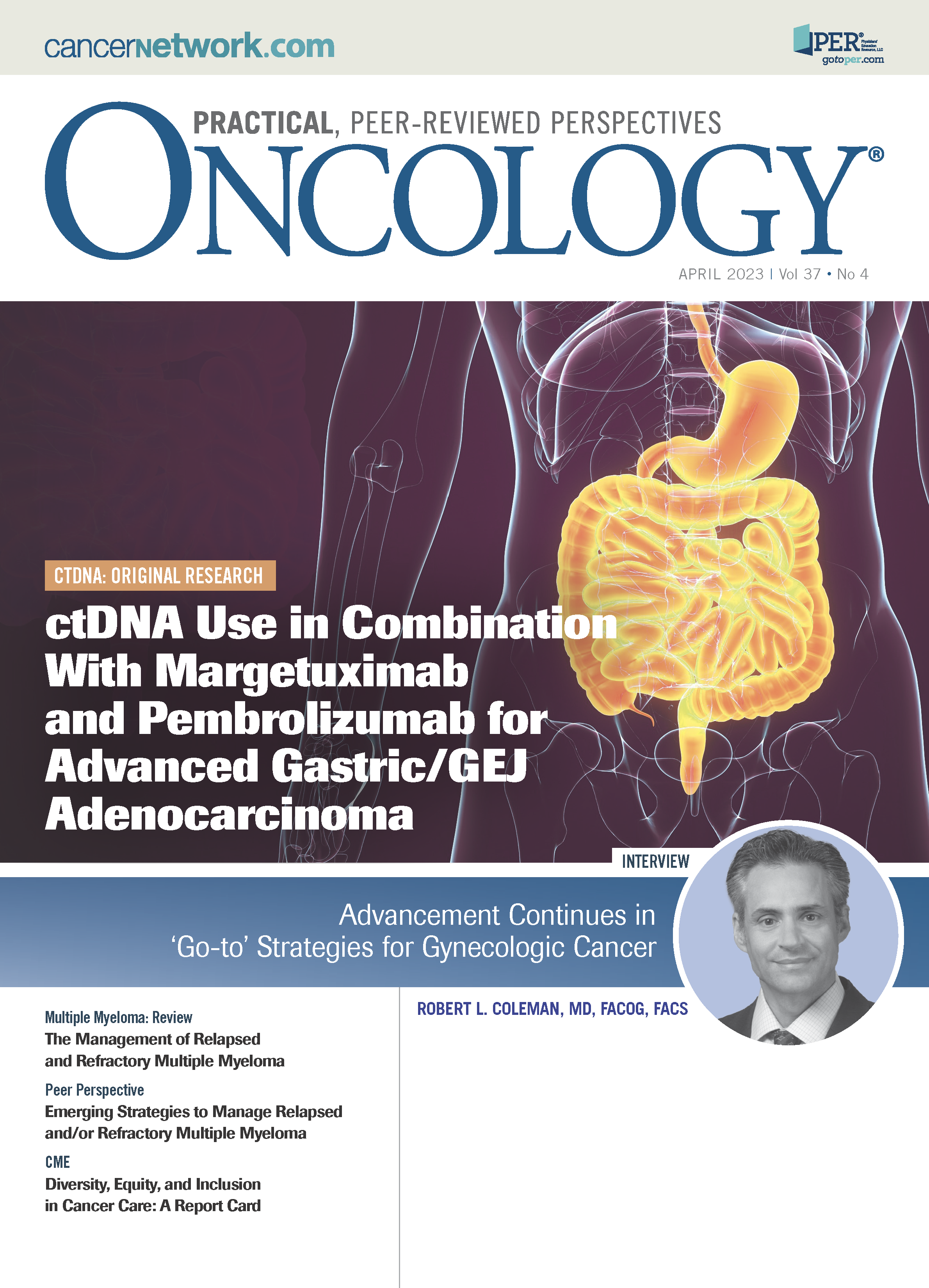Burnout: Which Way Out?
Co-editor-in-Chief Julie M. Vose, MD, MBA, writes about the effects and prevalence of burnout amongst oncologists and reviews strategies to address the issue.

Burnout and the related morale injury it causes are characterized by physical and/or emotional exhaustion, depersonalization, and decreased effectiveness. Burnout is all too common in physicians and is estimated to affect at least 50% of physicians at some point in their career.1 Many systemic risk factors contribute to this epidemic, including high patient volumes, increased administrative burden, lack of “user-friendly” electronic medical records, and lack of organizational infrastructure. Personal risk factors include being female, not having a spouse or partner, and being of younger age.
Oncologists are particularly at risk for burnout due to the difficult patient population we treat, continuous exposure to life-threatening illnesses, and psychological distress.
By now we can all identify burnout and stress. The more important question is what to do about it. Physician wellness starts with us: getting the rest we need, eating a healthy diet, exercising, doing activities that are not work related, and identifying and reducing unnecessary stress. The harder part is, how can we get the health care system to recognize stress in physicians and work with us on modifications to decrease the stress and burnout?
There is only so much any 1 physician can do on their own to reduce stress without infrastructure modifications. Research comparing the effectiveness of individual vs organizational interventions suggests that institutional interventions are much more effective than individual approaches alone, but both approaches when used together are the most effective in reducing burnout.2
How can health care professionals improve the systemic infrastructure that contributes to burnout? We need to work with the health care organization to build system-level interventions aimed at reducing environmental stressors and improve the workplace infrastructure support. One example of a program with such a design is the University of Colorado APEX (Awesome Patient Experience) teamwork model, which incorporates medical assistants to decrease administrative burdens on providers. After this system was implemented, the physician burnout rate was reduced from 53% to 13%.3
In addition, a thorough evaluation of the necessity of all online learning modules and excess meetings and committees and a reevaluation of patient volumes per provider are needed to move toward the future. Another example of an available program to help institutions is the American Medical Association STEPS Forward.4 This program recommends 9 strategies—engagement of leadership, acknowledgment and routine of longitudinal burnout assessments, creation of infrastructure for implementation of individual and system-level interventions, workflow efficiency, reduction in administrative burdens, support for the health of the workforce, strengthening of local leadership, tracking organizational costs of burnout, and routine assessment of interventions—to promote organizational health and employee well-being.
The most important aspect of improving burnout is for physicians to work with the administrative and health care teams and to advocate for themselves. Medicine is a team sport, and all the players need to work together for the same goal.
REFERENCES
- Shanafelt TD, West CP, Sinsky C, et al. Changes in burnout and satisfaction with work-life integration in physicians and the general US working population between 2011 and 2017. Mayo Clin Proc. 2019;94(9):1681-1694. doi:10.1016/j. mayocp.2018.10.023
- Panagioti M, Panagopoulou E, Bower P, et al. Controlled interventions to reduce burnout in physicians: a systematic review and meta-analysis. JAMA Intern Med. 2017;177(2):195-205. doi:10.1001/ jamainternmed.2016.7674
- Wright AA, Katz IT. Beyond burnout - redesigning care to restore meaning and sanity for physicians. N Engl J Med. 2018;378(4):309-311. doi:10.1056/ NEJMp1716845
- Redesign your practice: reignite your purpose. AMA Ed Hub. STEPS Forward. Accessed March 17, 2023. https://bit.ly/3YQq4z2

Late Hepatic Recurrence From Granulosa Cell Tumor: A Case Report
Granulosa cell tumors exhibit late recurrence and rare hepatic metastasis, emphasizing the need for lifelong surveillance in affected patients.